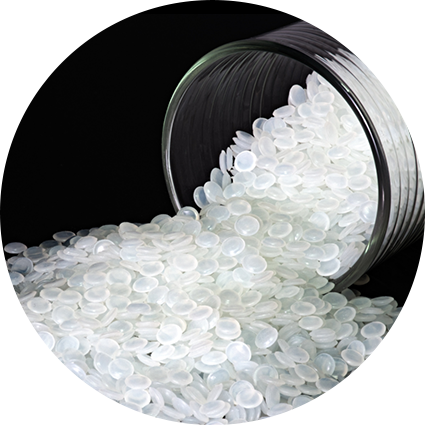In a world grappling with plastic pollution and the urgent need for sustainable alternatives, the introduction of Fully Biodegradable Polyester Modified Material represents a breakthrough in material science. Combining the durability of polyester with the ability to fully degrade into natural substances, this innovative solution is revolutionizing industries ranging from packaging to textiles and agriculture.
Why Do We Need Fully Biodegradable Materials?
Conventional plastics, especially polyester-based ones, have long been essential in daily life due to their strength, versatility, and low cost. However, their inability to decompose naturally has led to massive environmental challenges. Landfills and oceans are now overflowing with plastic waste that can take centuries to break down.
The fully biodegradable polyester modified material addresses this issue directly. Unlike traditional plastics, it decomposes into harmless components—primarily water and carbon dioxide—within controlled composting environments. This makes it a truly eco-friendly polyester material that supports the global push for a circular economy.
Unique Features of Fully Biodegradable Polyester Modified Material
Unlike early-generation biodegradable plastics that were often weak and impractical, this new material leverages advanced modification technologies to balance environmental sustainability with performance. Key features include:
-
High mechanical strength – offering toughness, impact resistance, and durability comparable to conventional polyester.
-
Thermal stability – making it suitable for hot-fill packaging, textiles, and industrial applications.
-
Processing flexibility – compatible with existing extrusion, injection molding, and fiber-spinning technologies.
-
Complete biodegradability – decomposing naturally without leaving microplastics or harmful residues.
This means industries can adopt the material without completely overhauling existing production systems, accelerating its path to widespread use.
Applications Across Multiple Industries
The versatility of eco-friendly biodegradable polyester material allows it to be applied in various fields where sustainability and performance are both essential.
1. Sustainable Packaging Solutions
Packaging is one of the largest sources of plastic waste. Biodegradable polyester modified material offers a high-performance alternative for:
-
Food containers and trays.
-
Shopping bags and carry bags.
-
Biodegradable films and wraps for retail and logistics.
Unlike conventional packaging, these solutions decompose naturally, reducing waste management burdens.
2. Biodegradable Polyester for Textiles
Textile industries face growing pressure to reduce microplastic pollution caused by synthetic fibers. By using biodegradable polyester fibers, fashion and home textile brands can:
-
Produce eco-friendly clothing.
-
Develop sustainable upholstery and household fabrics.
-
Offer biodegradable sportswear and outdoor gear.
This provides a greener alternative to fast fashion’s reliance on non-biodegradable polyester.
3. Agricultural Applications
Plastic mulch films, widely used in farming, create disposal challenges. Replacing them with biodegradable polyester-based films ensures:
-
Soil enrichment after decomposition.
-
Reduced agricultural plastic waste.
-
Lower labor costs for film removal.
This contributes to both environmental and economic benefits for farmers.
4. Medical and Healthcare Uses
The medical field increasingly requires disposable yet safe materials. Biodegradable polyester medical supplies can be used for:
-
Disposable syringes and packaging.
-
Biodegradable sutures and implants.
-
Controlled drug release systems.
This minimizes medical waste and promotes sustainable healthcare practices.
Comparison: Conventional Polyester vs. Fully Biodegradable Polyester Modified Material
| Feature |
Conventional Polyester |
Fully Biodegradable Polyester Modified Material |
| Environmental Impact |
Non-biodegradable, polluting |
Fully biodegradable, eco-friendly |
| Mechanical Strength |
High, durable |
Comparable, with advanced modification |
| Processing Compatibility |
Standard plastic techniques |
Compatible with extrusion, molding, spinning |
| Application Range |
Textiles, packaging, plastics |
Packaging, textiles, agriculture, medical use |
| Decomposition |
Persists for centuries |
Breaks down into water and CO₂ naturally |
| Sustainability |
Limited |
High – supports green economy and recycling |
This table highlights how biodegradable polyester material combines the best of both worlds—strength and sustainability.
Global Market Outlook
The global biodegradable plastics market is projected to grow at a double-digit rate in the coming decade, driven by government regulations, consumer awareness, and corporate sustainability commitments. Within this market, the biodegradable polyester modified material segment is expected to experience rapid expansion due to:
-
Legislative support – Many countries are banning single-use plastics, pushing industries toward biodegradable alternatives.
-
Consumer preference – Increasing demand for green packaging and textiles.
-
Corporate responsibility – Companies adopting eco-friendly materials to strengthen brand reputation.
-
Cost competitiveness – Advancements in production technology lowering the price gap between traditional polyester and biodegradable versions.
By 2030, analysts predict that eco-friendly polyester materials could represent a significant portion of the global sustainable plastics market.
The Future of Sustainable Innovation
The development of Fully Biodegradable Polyester Modified Material demonstrates how innovation can solve real-world environmental problems without sacrificing industrial performance. Its potential to transform packaging, textiles, agriculture, and healthcare signals a new era in material science—one where environmental responsibility is built into product design from the start.
For businesses, governments, and consumers alike, adopting this material is not just about reducing waste—it is about actively shaping a sustainable future.










